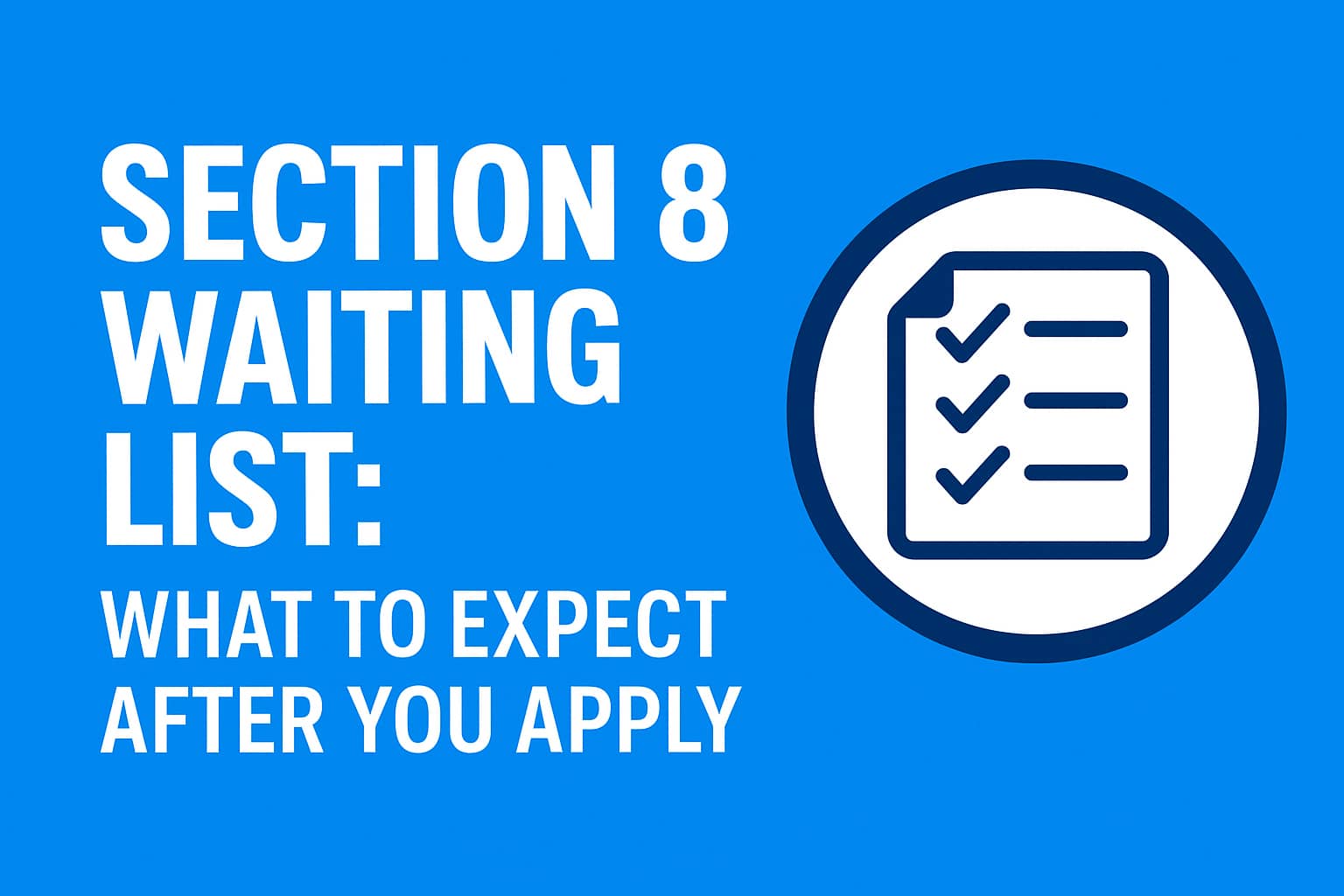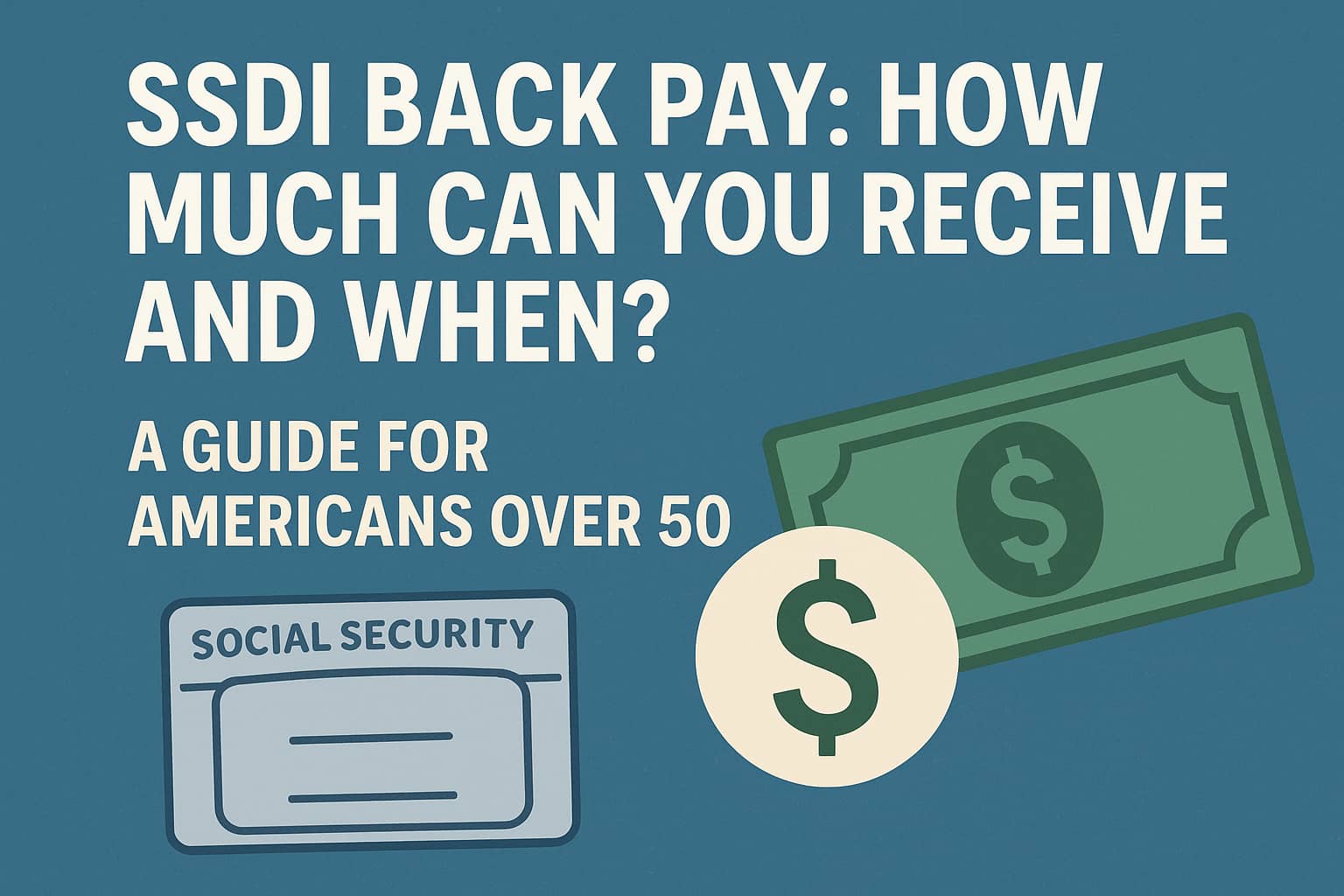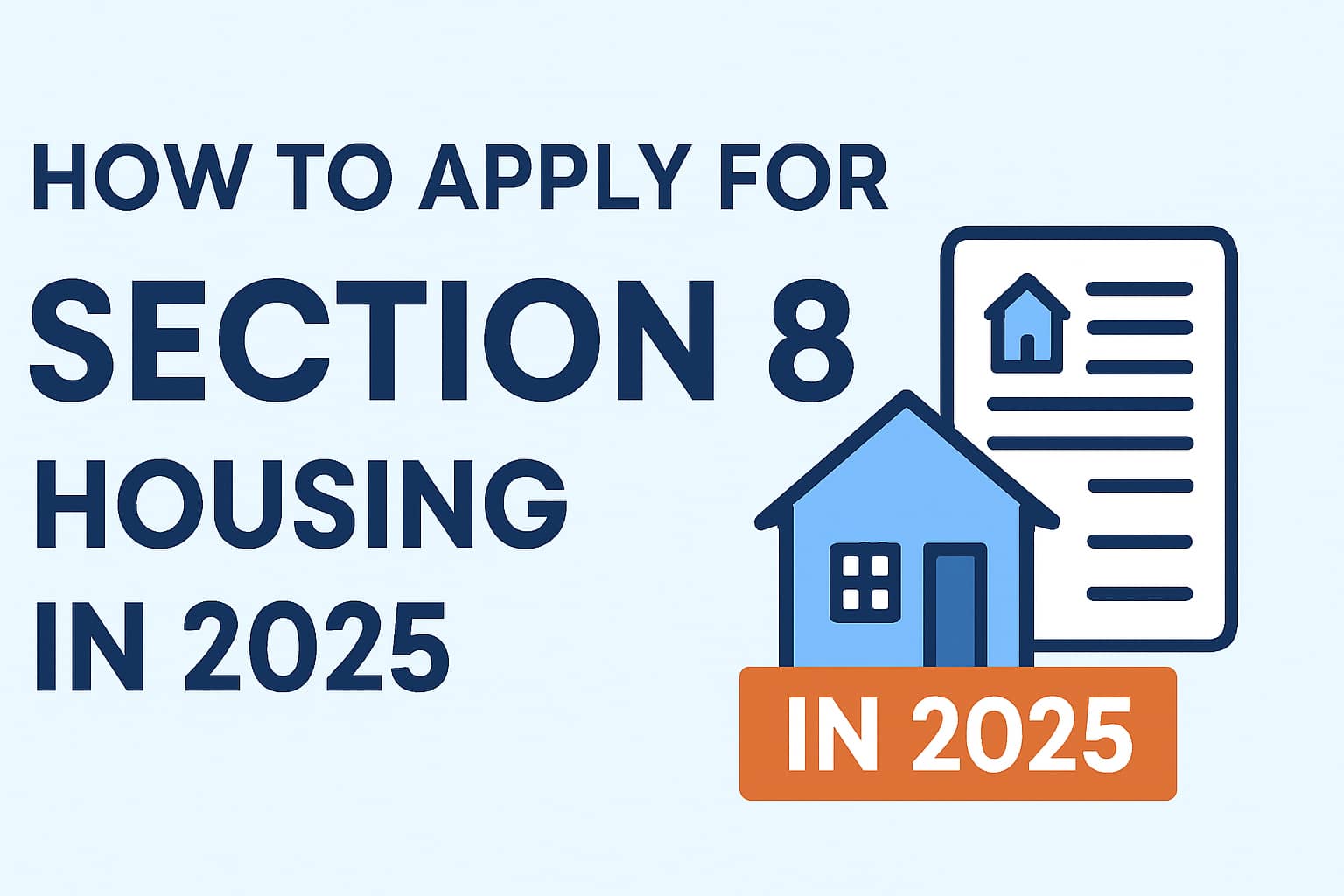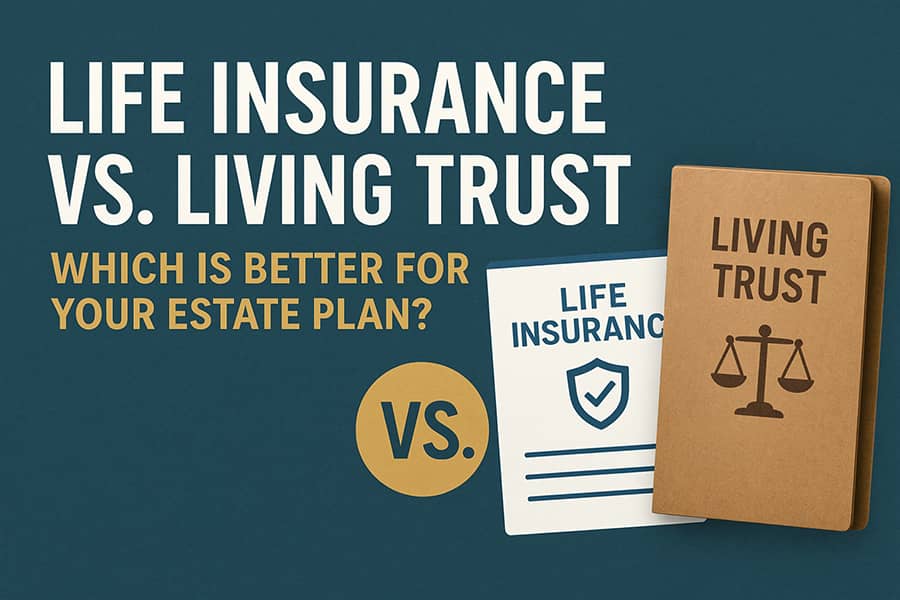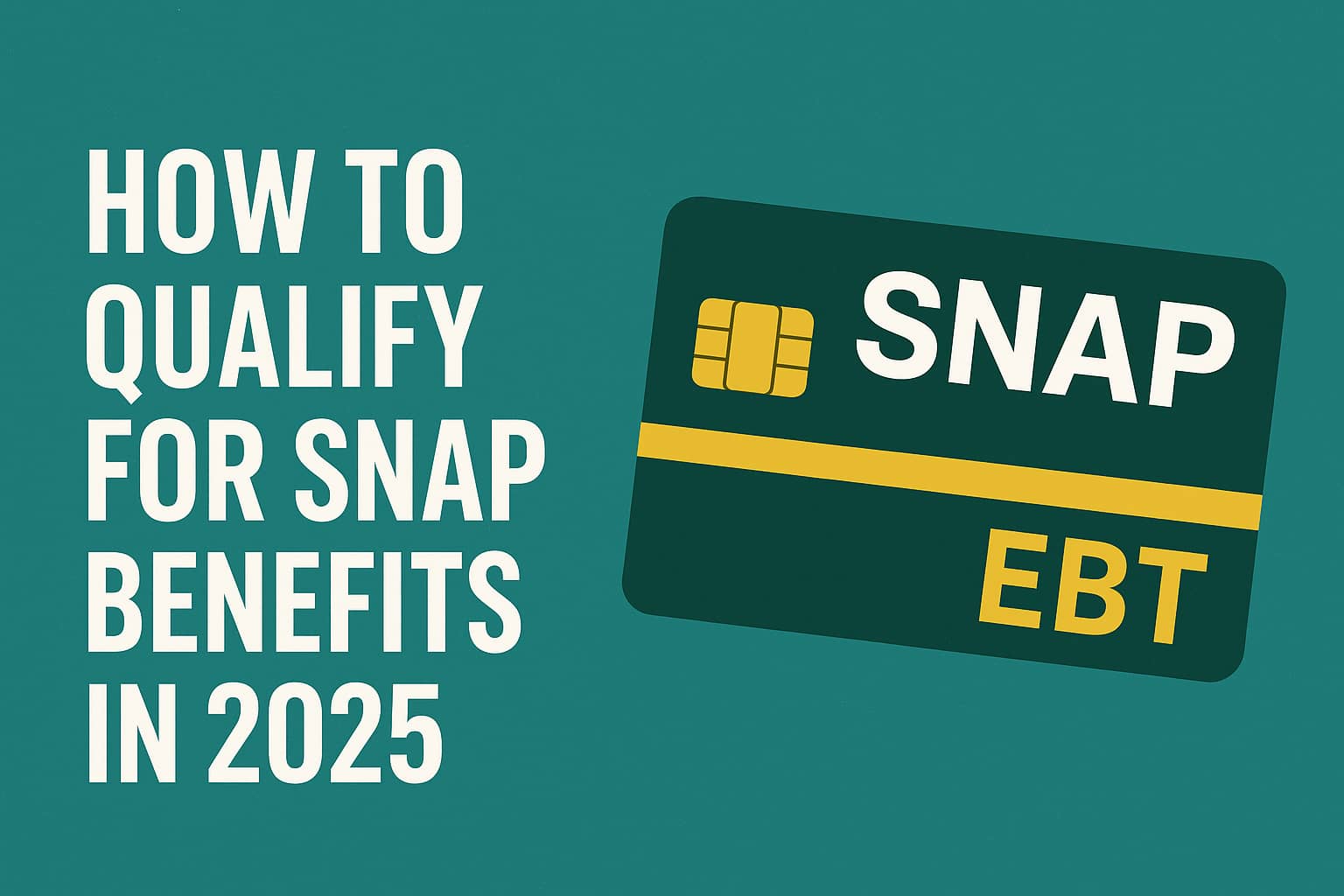
How to Qualify for SNAP Benefits in 2025: The Complete Guide
September 27, 2025
Millions of Americans rely on the Supplemental Nutrition Assistance Program (SNAP), formerly known as “food stamps,” to help cover the cost of groceries. If you or someone you know is struggling to afford food, SNAP can be a lifeline. But understanding the rules, income limits, and application process can feel overwhelming.
This comprehensive 2025 guide will explain:
- Who qualifies for SNAP
- The income and asset limits in 2025
- Special rules for seniors, people with disabilities, and families with children
- How to apply step-by-step
- Common mistakes and how to avoid them
- Frequently asked questions
By the end, you’ll know exactly what steps to take if you want to apply for SNAP this year.
What Is SNAP?
The Supplemental Nutrition Assistance Program (SNAP) is the largest federal nutrition assistance program in the United States. It provides eligible low-income individuals and families with an Electronic Benefit Transfer (EBT) card, which works like a debit card to buy food at approved grocery stores, supermarkets, and even some farmers’ markets.
SNAP is designed to ensure that every American has access to healthy food, regardless of financial situation.
Who Can Qualify for SNAP in 2025?
SNAP eligibility is based on a combination of income, household size, and resources. In general, you may qualify if:
- You are a U.S. citizen or a lawfully present non-citizen.
- You live in the state where you apply.
- Your household income is at or below the SNAP income limits.
- Your household resources/assets are within allowed limits.
Special Groups with Easier Rules
- Seniors (age 60+) and people with disabilities: May qualify even with slightly higher income or assets.
- Families with children: Often have higher income thresholds.
- Working adults with low wages: Eligible if income falls under the limits.
SNAP Income Limits in 2025
To qualify, most households must meet both:
- Gross monthly income limit (before taxes/deductions).
- Net monthly income limit (after deductions like housing, medical expenses, or dependent care).
Here are the federal gross income limits for 2025 (130% of the federal poverty line):
| Household Size | Maximum Gross Monthly Income | Maximum Net Monthly Income |
|---|---|---|
| 1 | $1,676 | $1,041 |
| 2 | $2,268 | $1,410 |
| 3 | $2,860 | $1,778 |
| 4 | $3,452 | $2,146 |
| 5 | $4,044 | $2,515 |
| 6 | $4,636 | $2,883 |
| 7 | $5,228 | $3,251 |
| 8 | $5,820 | $3,620 |
| Each additional member | +$592 | +$369 |
(Note: Some states may have slightly different limits or use “Broad-Based Categorical Eligibility” rules, which make qualifying easier.)
SNAP Asset Limits in 2025
Assets include things like money in the bank, cash, or stocks. Your home and retirement accounts do NOT count as assets for SNAP.
- Most households: Asset limit is $2,750.
- Households with at least one person age 60+ or disabled: Asset limit is $4,250.
What Expenses Can Be Deducted?
Your net income for SNAP is often lower than your gross income, because you can deduct certain expenses. Common deductions include:
- 20% of earned income (wages, self-employment).
- Standard deduction based on household size.
- Medical expenses (for elderly or disabled members, if over $35/month).
- Childcare/dependent care costs.
- Excess shelter costs (like high rent, mortgage, utilities).
These deductions help many households qualify even if their gross income looks too high.
How Much SNAP Benefits Can You Get in 2025?
SNAP benefit amounts depend on your household size and net income.
Here are the maximum monthly SNAP benefits for 2025:
| Household Size | Maximum Monthly Benefit |
|---|---|
| 1 | $291 |
| 2 | $535 |
| 3 | $766 |
| 4 | $973 |
| 5 | $1,155 |
| 6 | $1,386 |
| 7 | $1,532 |
| 8 | $1,751 |
| Each additional member | +$219 |
How to Apply for SNAP Benefits in 2025
The SNAP application process can vary by state, but here are the typical steps:
Step 1: Gather Your Documents
You will need:
- Proof of identity (driver’s license, state ID, or birth certificate).
- Proof of residency (utility bill, lease).
- Social Security numbers for all household members.
- Proof of income (pay stubs, tax returns, Social Security award letters).
- Proof of expenses (rent receipts, childcare costs, medical bills).
Step 2: Apply Online, by Mail, or in Person
- Online: Most states allow online applications through their Department of Human Services (DHS) or similar agency.
- Mail or Fax: Download, print, and send the application.
- In person: Visit your local SNAP office.
Step 3: Complete an Interview
- After submitting your application, you will be contacted for an interview (phone or in person).
- Be ready to explain your income, household members, and expenses.
Step 4: Wait for a Decision
- States must issue a decision within 30 days.
- Emergency SNAP (expedited benefits) may be issued within 7 days for households in crisis.
Step 5: Get Your EBT Card
- If approved, you will receive an EBT card to use at approved grocery stores and online retailers like Walmart and Amazon (in some states).
Common Reasons People Are Denied SNAP
- Income is above the limit (but sometimes deductions were not applied correctly).
- Missing paperwork or documentation.
- Not attending the required interview.
- Household information not updated (e.g., forgetting to report job loss or medical expenses).
👉 If you are denied, you can appeal the decision. Every state has a process to request a “fair hearing.”
SNAP Rules for Seniors and Disabled Individuals
If you are over 60 or have a disability:
- You may qualify even if your income is slightly higher.
- You can deduct out-of-pocket medical expenses (doctor bills, prescriptions, Medicare premiums, transportation to medical care).
- Higher asset limit ($4,250 in 2025).
This makes SNAP especially helpful for retirees on a fixed income.
SNAP and Work Requirements in 2025
If you are an Able-Bodied Adult Without Dependents (ABAWD) between ages 18–52:
- You must meet certain work requirements to receive benefits.
- Usually, you must work or participate in a work program at least 80 hours per month.
Exceptions exist for students, caregivers, people with medical conditions, or those in areas with high unemployment.
Tips for a Successful SNAP Application
- Report all deductions (especially rent, childcare, and medical expenses).
- Keep copies of everything you submit.
- Respond quickly to calls or letters from your caseworker.
- If denied, request a fair hearing—many denials are reversed.
SNAP Myths and Misconceptions
- Myth: Only unemployed people can get SNAP.
- Fact: Many SNAP recipients are working but earn low wages.
- Myth: You can only buy junk food.
- Fact: SNAP can be used for fresh produce, dairy, meat, and more.
- Myth: SNAP covers all food costs.
- Fact: SNAP is designed to supplement, not fully replace, a household’s food budget.
Frequently Asked Questions (FAQ)
1. Can I use SNAP to buy hot food or restaurant meals?
- Generally, no. But some states have a “Restaurant Meals Program” for seniors, homeless, and disabled individuals.
2. Can I use SNAP benefits online?
- Yes, many states allow SNAP EBT to be used for grocery delivery or pickup at stores like Walmart, Amazon, and local grocers.
3. Do SNAP benefits roll over if unused?
- Yes, unused benefits carry over to the next month. But if you don’t use your card for 12 months, your benefits may be removed.
4. Will getting SNAP affect my immigration status?
- Receiving SNAP does not count against you for public charge rules (except some rare visa cases).
5. How often do I need to renew SNAP?
- Most states require you to recertify every 6–12 months, depending on your situation.
Conclusion
SNAP is one of the most important programs in America, ensuring that families, seniors, and individuals don’t go hungry. In 2025, qualifying for SNAP depends on your household income, size, and resources—but many people are surprised to learn they qualify once deductions are applied.
If you’re struggling with food costs, don’t wait. Gather your documents, apply through your state’s SNAP office, and get the help you deserve.
Disclaimer
This article is for informational purposes only and does not replace official state or federal guidance. For the most accurate information, always check your state’s Department of Human Services (DHS) website or call your local SNAP office.
Recent Posts
What to Expect After You Apply: The Section 8 Waiting List
September 29, 2025
SSDI Back Pay: How Much Can You Receive and When?
September 29, 2025
How to Apply for Section 8 Housing in 2025 – Complete
September 27, 2025
Supplements That Help With Memory Loss in Seniors
August 10, 2025
SUBSCRIBE TO OUR NEWSLETTERS
Subscribe our newsletter for latest news, questions. Let's stay updated!

